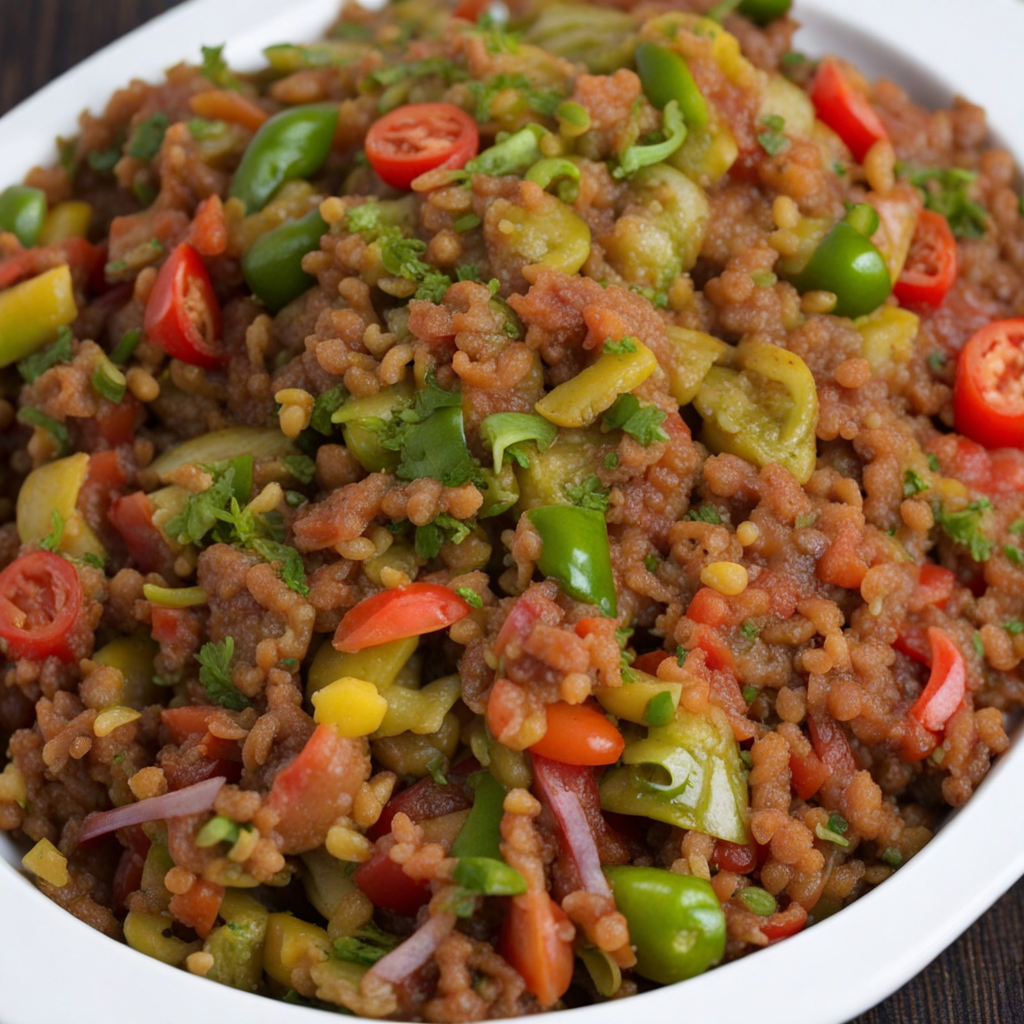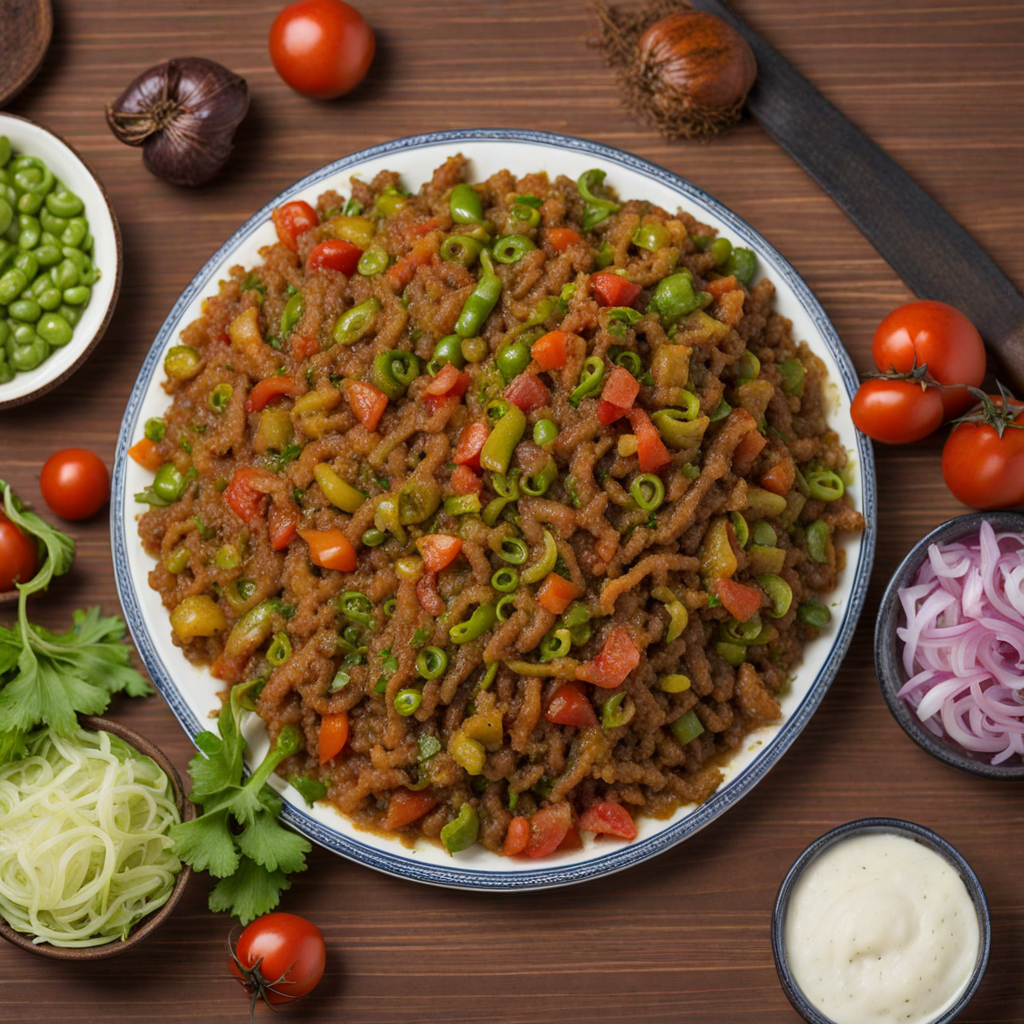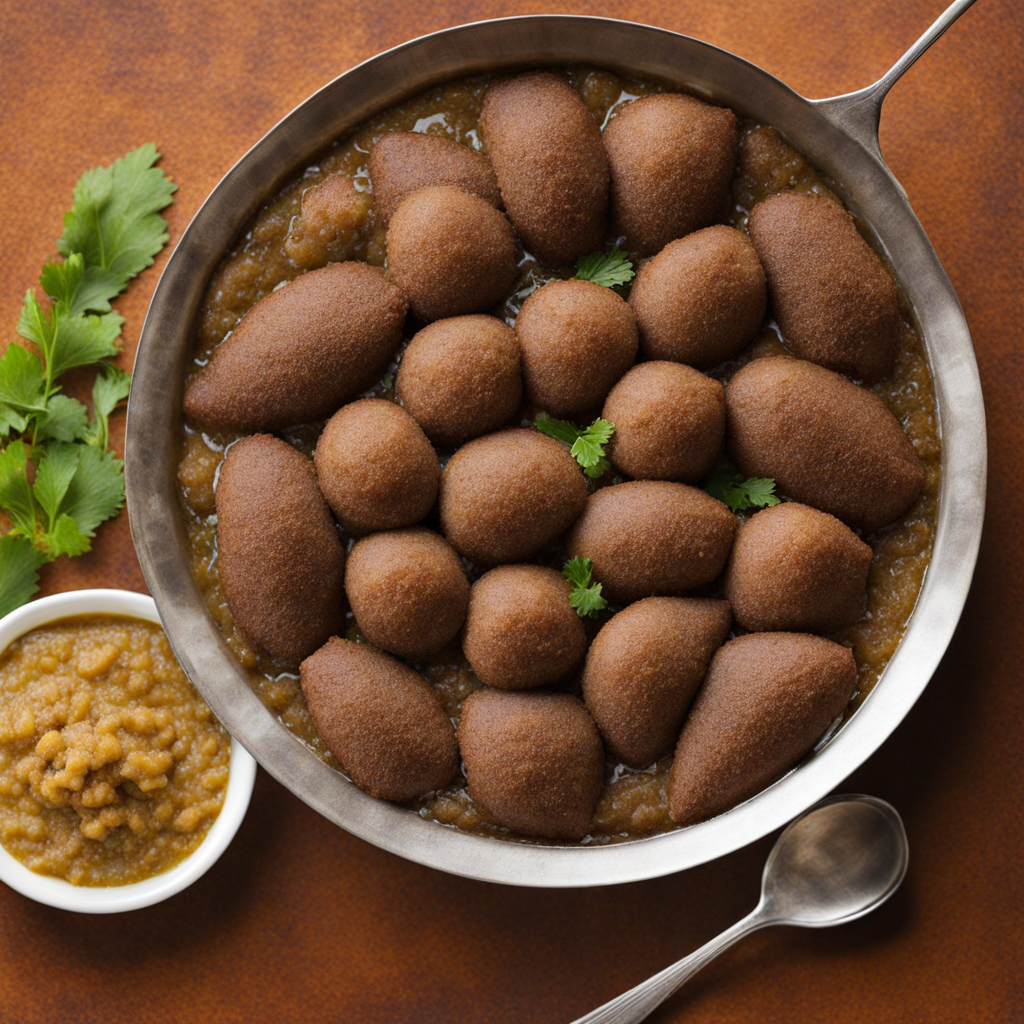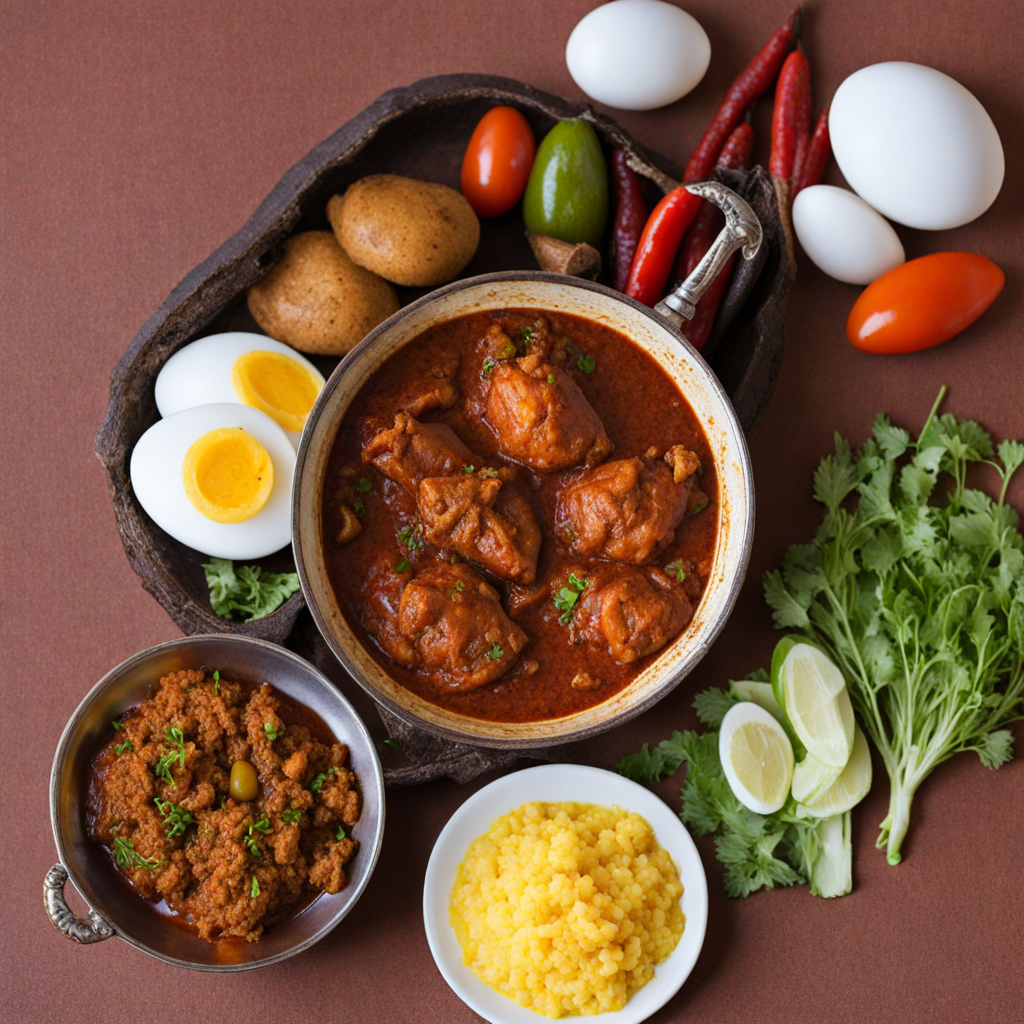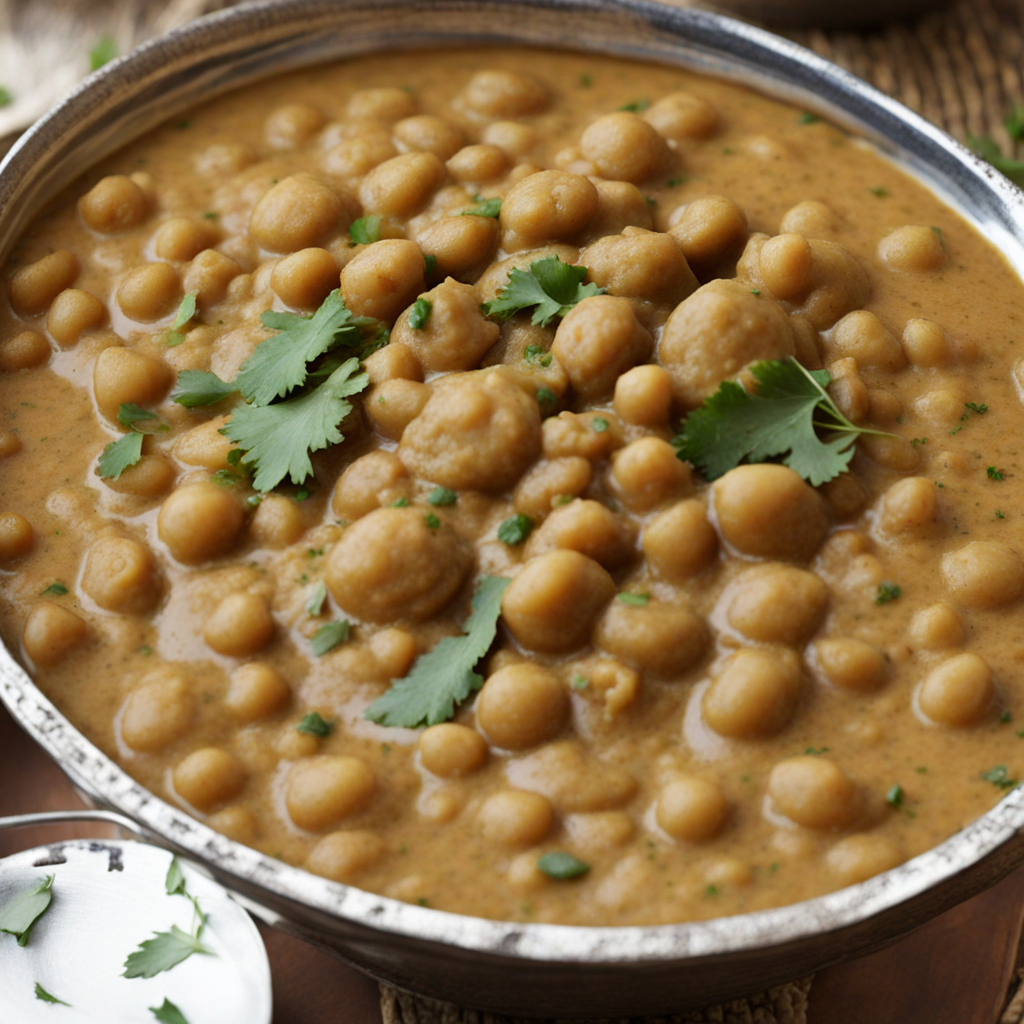Selata
Selata is a vibrant and refreshing Ethiopian salad that showcases the country's emphasis on fresh ingredients and bold flavors. Typically made with finely chopped vegetables such as tomatoes, onions, and green peppers, Selata provides a burst of color and a delightful crunch with each bite. The vegetables are often mixed with a drizzle of olive oil and a squeeze of lemon juice, which enhances their natural flavors while adding a zesty kick. This combination makes Selata not only a healthy option but also a perfect accompaniment to the richly spiced stews and grilled meats that are staples of Ethiopian cuisine. One of the distinctive features of Selata is its ability to incorporate various types of seasonal vegetables, which can vary by region and availability. In some variations, ingredients like cucumbers, carrots, and even avocados are included, making it a versatile dish that can be adapted to suit personal tastes. The salad is often seasoned with traditional Ethiopian spices, such as berbere or mitmita, which infuse it with a mild heat and depth of flavor, elevating it beyond a simple garden salad. Selata is often served as part of a larger meal, typically alongside injera, the famous Ethiopian flatbread, or as a refreshing side dish to grilled meats like kebabs. The delightful contrast of textures and flavors makes it a favorite among locals and visitors alike. For those looking to explore Ethiopian cuisine, Selata is a must-try dish that embodies the essence of the country’s culinary culture, offering a unique and satisfying taste experience.
How It Became This Dish
The History of ሰላጣ (Salata): An Ethiopian Culinary Treasure #### Origins of ሰላጣ The term "ሰላጣ" (salata) refers to a variety of salads that are popular in Ethiopian cuisine. While the precise origins of salata are difficult to pinpoint, it is clear that its roots are intertwined with the broader traditions of East African and Mediterranean food systems. Ethiopia, known for its rich agricultural heritage and diverse ecological zones, has cultivated a plethora of vegetables and herbs ideal for salad preparation. Historically, the Ethiopian highlands were home to a range of vegetables, including tomatoes, onions, and peppers, which are central to many salata recipes today. The adoption of these ingredients can be traced back to ancient agricultural practices, which began thousands of years ago when Ethiopia was one of the earliest centers of domesticated crops. As trade routes flourished and cultural exchanges occurred, especially during the Aksumite Empire (100 AD - 940 AD), the introduction of various spices and cooking methods contributed to the evolution of Ethiopian cuisine, including salata. #### Cultural Significance Salata holds a significant place in Ethiopian culture, serving not just as a side dish but also as a symbol of hospitality and community. Ethiopians often prepare salata for communal meals, known as "gursha," where diners share food from a large platter. This practice promotes the values of togetherness and sharing, reflecting the Ethiopian ethos of community. In Ethiopian Orthodox Christian culture, which celebrates numerous fasting days throughout the year, salata becomes particularly relevant. During these fasting periods, when many adhere to a plant-based diet, salata offers a nutritious and satisfying option. It is often served alongside injera, a sourdough flatbread that acts as both a plate and a utensil. This combination not only enhances the meal's flavors but also reinforces the cultural importance of balance and variety in Ethiopian diets. Salata’s role extends beyond mere sustenance; it reflects the agricultural cycles and seasonal produce of Ethiopia. Many families make salata with whatever vegetables are in season, showcasing the diversity of Ethiopian agriculture and the importance of fresh, local ingredients. This practice is a testament to the Ethiopian philosophy of living in harmony with nature and embracing the bounty of their land. #### Ingredients and Preparation Traditional Ethiopian salata is characterized by its vibrant colors and fresh flavors, often incorporating ingredients such as tomatoes, onions, green peppers, and sometimes avocados. One of the most common preparations involves chopping these vegetables finely and tossing them with a dressing made of lemon juice, olive oil, and sometimes a hint of berbere spice—a staple Ethiopian spice blend made from chili peppers, garlic, ginger, and various other spices. The resulting dish is light, refreshing, and bursting with flavor. Variations of salata exist throughout the country, influenced by regional ingredients and local customs. For example, in the northern regions, you might find salata featuring roasted beets or carrots, while in the south, it might include herbs like coriander or even more exotic ingredients like mango or avocado. #### Evolution of Salata Over time, salata has evolved, influenced by both internal and external culinary trends. With globalization and the diaspora of Ethiopian communities around the world, traditional recipes have undergone adaptations. In Ethiopian restaurants abroad, salata may be served with different dressings or additional ingredients to cater to local tastes, such as feta cheese or olives. The growing interest in health and nutrition has also brought salata into the limelight as a wholesome dish. As people become more aware of the benefits of fresh vegetables, the demand for salata has increased, leading to its incorporation into various menus beyond Ethiopian cuisine. This has allowed it to gain recognition as a healthy choice in modern dining contexts. Moreover, the global popularity of Ethiopian cuisine has led to a renewed interest in the cultural practices surrounding salata. Cooking classes, food festivals, and culinary tours highlight the preparation of salata, helping to educate people about its significance and the traditions behind it. This resurgence has also contributed to a greater appreciation for Ethiopian agriculture and its sustainable practices. #### Salata in Modern Ethiopia In contemporary Ethiopia, salata remains a staple in both urban and rural households. As the country modernizes, traditional practices often blend with contemporary culinary trends, creating exciting new interpretations of classic dishes. Street vendors and local restaurants serve salata not only as a side dish but also as a main attraction, often featuring innovative combinations that reflect the creativity of modern Ethiopian chefs. Furthermore, salata has become a canvas for cultural expression. In urban areas, where access to diverse ingredients has expanded, chefs experiment with international flavors while staying true to Ethiopian roots. This creativity has led to unique interpretations of salata that incorporate ingredients such as quinoa or even exotic fruits, attracting a younger, health-conscious audience. #### The Future of Salata As Ethiopia continues to evolve, salata is likely to maintain its significance as a cultural staple. The ongoing interest in food sustainability and organic farming may further enhance the value placed on fresh, locally sourced ingredients. Initiatives aimed at promoting traditional agriculture and culinary practices will likely ensure that salata remains a beloved dish that is both a symbol of Ethiopian heritage and a reflection of current culinary trends. In summary, ሰላጣ (salata) is more than just a salad; it is a vibrant expression of Ethiopian culture, history, and community. From its ancient origins to its modern interpretations, salata embodies the essence of Ethiopian cuisine—celebrating the land, the people, and the rich culinary traditions that have endured and adapted through the ages. As a dish that brings people together, salata will undoubtedly continue to thrive, embracing both its traditional roots and the innovative spirit of contemporary Ethiopia.
You may like
Discover local flavors from Ethiopia


